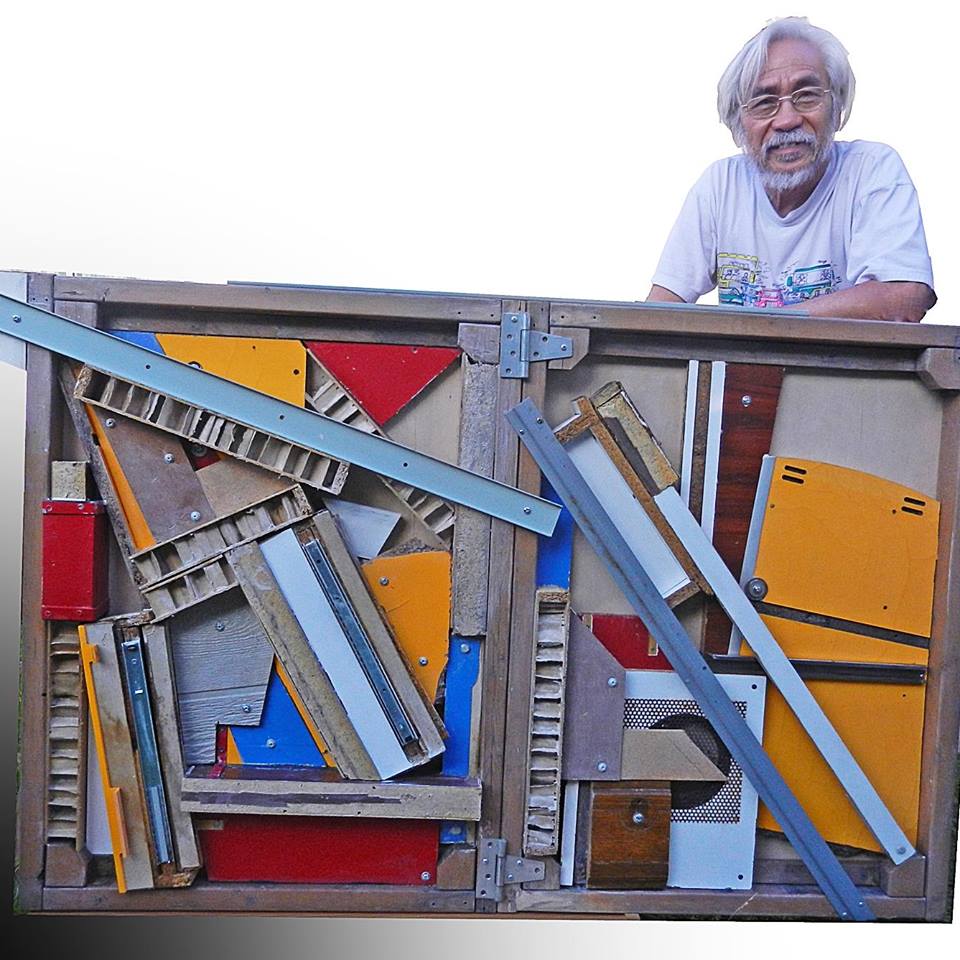
Seventy-four works - including 11 experimental reliefs cast in reconstituted paper - comprise Rodolfo Samonte's first show (Luz Gallery, until June 28) after extensive travels during 1975 and 1976 which took him to Japan, the United States, Canada, South America and Europe.
The show also includes six acrylic paintings, two of them on wood in monochromatic whites and high relief. The majority of the works, however, are the silk screen or screenprint abstractions of line, color and tone whose delicate and craftsmanlike qualites have made Samonte a highly respected artist in this country.
It will be remembered that Samonte's approach to serigraphy entailed the application of several layers - often as many as 20 to 30 - of paint. Because the shapes and patterns in the old works were in the hard-edge idiom, the prints tended to take on sculptural qualities, so that it should come as no surprise that he has now come up with reliefs in wood and in paper.
The wood reliefs, entitled White Modular and Fourth White Painting recall Arturo Luz's monochrome-white and geometically severe abstractions of the past. Probably because
 of his exposure to Japanese printmakers in Japan, Samonte now makes his own paper (the National Artist Teizuke Fuzikawa makes his paper from persimmon juice), rather reconstitute it from paper mash (paper mache) to which he adds his own ingredients like bleached cabbage leaves and so on, and with which material he now casts his curvilinear shapes.
of his exposure to Japanese printmakers in Japan, Samonte now makes his own paper (the National Artist Teizuke Fuzikawa makes his paper from persimmon juice), rather reconstitute it from paper mash (paper mache) to which he adds his own ingredients like bleached cabbage leaves and so on, and with which material he now casts his curvilinear shapes.It was Manuel Rodriguez of course, the father of Philippine printmaking, who started making his own paper for printmaking purposes in the early 60's. But it is Samonte who has now brought this technique onto the level of painting and sculpture as well, as these (the Paperwork series) are reliefs although placed under glass for protection against dust and the inquisitive finger.
The cast-paper reliefs are in monochromatic white and zinc-grey. But the planar areas are differentiated by constructs of curved shapes which produce their own interplay of light and dark depending on where the light comes from, as in the Continuation, Curved Shapes series. We might also mention the textural qualities of the material itself which is grained and veined in certain areas.
A somewhat more challenging set of work is Paperworks I, II & III. In monochromatic white the works
 are gridded with
are gridded with alternating protuberances and indentations occuring where the lines meet. To be sure, these are not completely innovative as they recall certain idioms in the minimalist and systemic-grid traditions. But it is interesting just
alternating protuberances and indentations occuring where the lines meet. To be sure, these are not completely innovative as they recall certain idioms in the minimalist and systemic-grid traditions. But it is interesting just the same to see what Samonte does in terms of his own development.
the same to see what Samonte does in terms of his own development.The Colorscapes series is a spill-over from last exhibits, and directly relates to his works included in the Philippine section of the 1974 ASEAN Mobile Exhibition shown in Kuala Lumpur, Singapore, Jakarta, Manila and Bangkok. It will be recalled that Samonte was the only printmaker among the group of eight painters who represented the Philippines at that historic exhibition of regional art, an indication of the high regard in which he is held in certain critical circles.
Also in the current show is a
 continuation of the Curvilinear series, seven of them, and the Colorscapes, nine of them. The latter have certain rough textures here and there created to offset the sense of craft the Samonte is capable of over-doing. But in Curvilinears he transcends the self-consciousness to produce elegant combinations of geometric form and understated feeling, which is one way of describing a classicistic way of art.
continuation of the Curvilinear series, seven of them, and the Colorscapes, nine of them. The latter have certain rough textures here and there created to offset the sense of craft the Samonte is capable of over-doing. But in Curvilinears he transcends the self-consciousness to produce elegant combinations of geometric form and understated feeling, which is one way of describing a classicistic way of art.We miss however, the striated-color binaries called Shapings which were the main feature of the December, 1974 show at the Luz, and which as Nancy Rocamora, writing for the January, 1975 issue of Manila Paper, rightly surmised, stressed a polarization rather than an orchestration of painterly and graphic elements. Instead, Samonte offers us a new series called Curvations, in which the plurarity of the shapes and forms and colors, is superseded by a drastic simplification of same, and another group called Diagonals.
A solitary work Structures, dramatizes this move towards reduction: two slightly ovoid, cloudlike shapes, one white and the other off-pink, the first overhanging the other. The current show reveals a new flowering without prejudice to the old Samonte that we are familiar with.
Leonidas Benesa (1928 - 1984) was one of the Philippine's most respected writer and art critic. His works include What Is Philippine About the Philippine Arts , a collection of his articles written from 1975-1981, published by the National Commission for Culture and the Arts in 2000.





1 comment:
Hi Rod, congrats with the new blog, and looking forward to seeing more posts about you, and about your work, and writings by you, of course. Even with Leo Benesa's writing, local audiences have yet to appreciate more the ideas/language of formalism and abstraction in Philippine art. You are one of few artists here who contributed to that language. Mabuhay ang artistang Pilipino!
Post a Comment